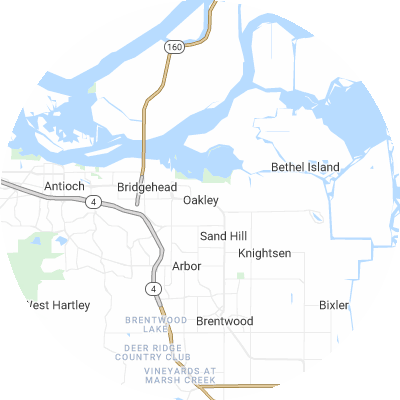Signs You May Need Gutter Guards
While gutter guards aren't always necessary, signs of obstructed gutters are clear. Issues stemming from persistent gutter problems include:
- Visibly saggy, damaged, or misaligned gutters that no longer correctly direct rainwater
- Leaky seams or joints where water leaks from the gutters
- Soggy ground or visible erosion around your home's foundation
- Frequent clogs that cause overflow and water to spill over gutters
- Mold growth, peeling exterior paint, or interior water stains on walls near gutters.
How To Choose a Gutter Guard Installer
Assess Their Experience
When choosing an installation company, look for one with considerable experience and knowledge about many brands and guard types. A company with experience will understand how to measure and fit gutter guards for your specific needs. Check a provider's years of experience and request referrals from local customers.
Verify Proper Licensing and Insurance
When speaking with potential installation providers, always confirm that they are licensed, bonded, and insured with both general liability and workers compensation policies. This protects you if any injuries or accidents occur. Ask for current licensing and insurance papers from potential providers.
Choose Reputable Brands
Look for companies that carry highly reputable gutter guard brands like LeafFilter and Gutter Helmet. Avoid companies that only install their own off-brands or generic no-name guards, which may not have undergone rigorous quality control testing.
Seek Custom Fit Services
For optimal performance, gutter guards need to be custom-fitted to match your specific gutter setup. Choose a company that custom measures and trims guards specifically for your home, rather than using one-size-fits-all guards. Correctly fitted guards will leave no gaps for debris to get stuck.
Examine Warranties
High-quality gutter guard installers usually offer 20-year or lifetime warranties protecting against rust, leaks, clogs, and other defects. Before picking a company, thoroughly review the warranty terms for both materials and workmanship guarantees. Warranties are the most effective way to safeguard your gutter investment.
Check Reviews and Referrals
Be sure to check online reviews on sites such as Google Reviews, Yelp, or the Better Business Bureau (BBB) to see what customers say about their experience. You can also ask your neighbors who they would recommend for quality gutter guard businesses in your area. When researching potential providers, we recommend selecting companies with a history of consistent positive feedback rather than just one or two reviews.
Types of Gutter Guards
The six primary types of gutter guards are as follows:
- Foam guards are lightweight and easy to install. With this type of guard, debris lands on the foam instead of in your gutter. Foam guards cost roughly $2.46 per linear foot.
- Brush guards are what they sound like: large brush bristles that sit in your gutters to block debris but let water through. On average, you can expect to spend $4.04 per linear foot for brush guards.
- Screen guards have large holes that let water flow through while stopping debris. On average, you can expect to spend $4.29 per linear foot for screen guards.
- Mesh guards have smaller holes than screen guards and similarly stop debris while allowing water to flow through. Mesh gutter guards are durable and help debris slide off rather than sit on your gutters. On average, you can expect to pay $4.06 per linear foot for mesh guards.
- Micro-mesh guards have even smaller holes than mesh guards and let even less debris into your gutters than mesh. These types of guards are extremely effective. Micro-mesh guards cost around $5.14 per linear foot.
- Surface tension guards, also called reverse curve guards, use surface tension to encourage water to flow into gutter system while debris slides off. Normally, they are visible from the ground. Surface tension guards cost around $3.16 per linear foot.














